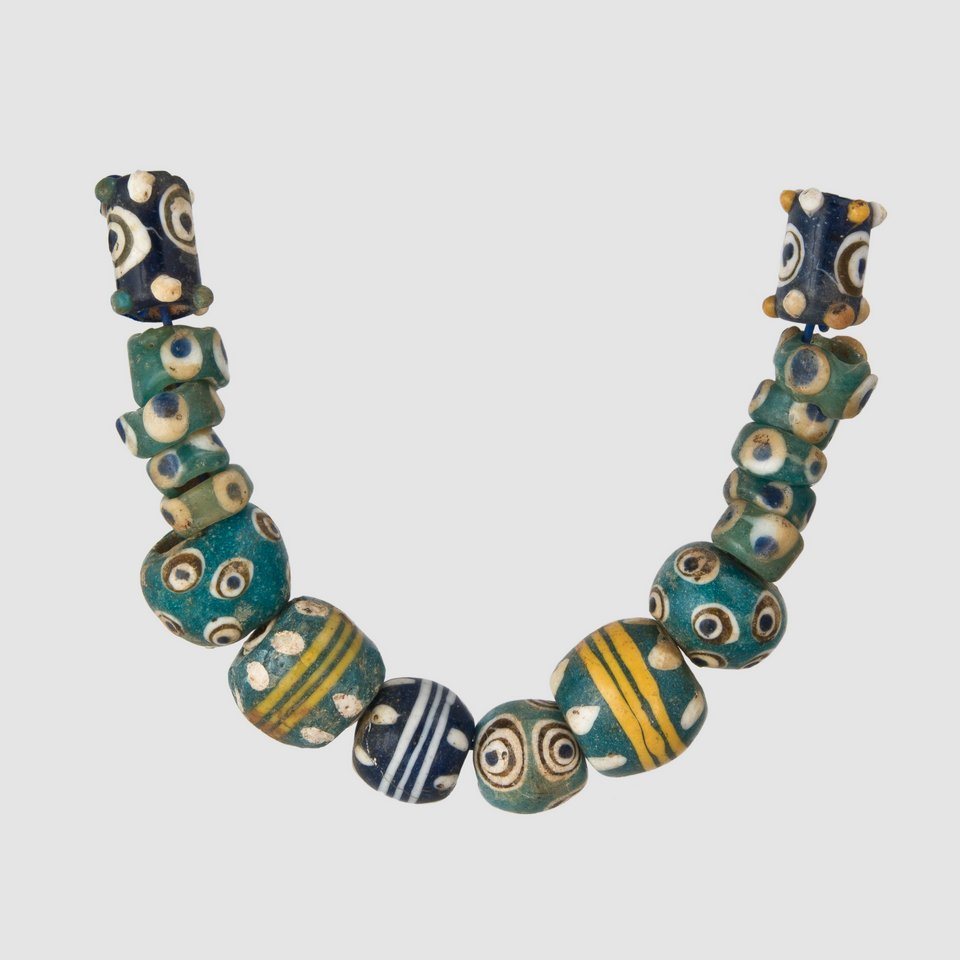A necklace is one of the oldest and most common types of jewelry, the earliest examples of which were used by our ancestors 100,000 years ago. They were worn or sewn onto clothes, paying special attention to the lines of the neck and chest, that is, the most vulnerable places, because any necklace performed not only an aesthetic, but also a magical, protective function. Beads could be of different colors, shapes, decorated with different decorations, but the ornament in the form of eyelets was the most popular in the territory of the Northern Black Sea region during antiquity. Many researchers associate its emergence with the special attitude of people to eye contact. According to these ideas some creatures, including humans, have a cursed, “evil” eye that can cause various disasters: failures in business, illness, and even death.
But at the same time for many peoples of the world the eye has become a symbol of magical abilities, power, protection, and the ability of a deity or hero to see beyond the reach of an ordinary person. Accordingly, the image of an eye or eyes of various shapes and colors was considered a very strong protective amulet - it repelled those similar to itself, i.e., a look that could cause harm. Thus, beads with little eyes became "eyes that can see in all directions" and were considered protective amulets against the evil eye.
en

